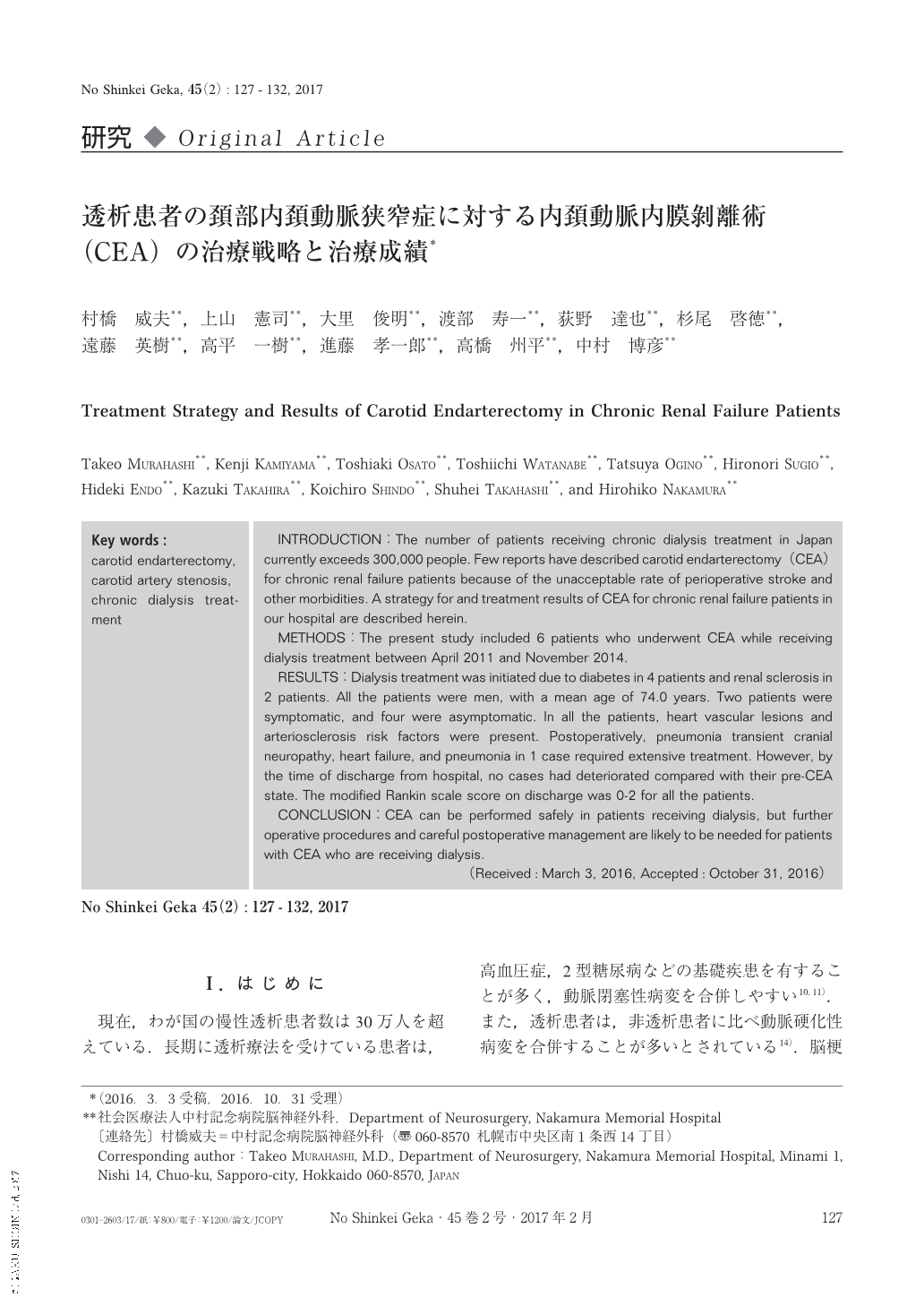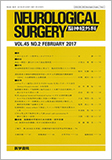Japanese
English
- 有料閲覧
- Abstract 文献概要
- 1ページ目 Look Inside
- 参考文献 Reference
Ⅰ.はじめに
現在,わが国の慢性透析患者数は30万人を超えている.長期に透析療法を受けている患者は,高血圧症,2型糖尿病などの基礎疾患を有することが多く,動脈閉塞性病変を合併しやすい10,11).また,透析患者は,非透析患者に比べ動脈硬化性病変を合併することが多いとされている14).脳梗塞の原因となる頚部内頚動脈狭窄症の合併も稀ではない.しかしその治療に関しては,易出血性,組織脆弱性,不均衡症候群,透析中の創部出血など,術中,周術期のリスクが高いと言われている.透析患者に対する頚部内頚動脈内膜剝離術(carotid endarterectomy:CEA)の報告は少ない.今回われわれは,当院における透析患者の頚部内頚動脈狭窄症に対するCEAの治療戦略ならびに治療成績について,文献的考察を加え報告する.
INTRODUCTION:The number of patients receiving chronic dialysis treatment in Japan currently exceeds 300,000 people. Few reports have described carotid endarterectomy(CEA)for chronic renal failure patients because of the unacceptable rate of perioperative stroke and other morbidities. A strategy for and treatment results of CEA for chronic renal failure patients in our hospital are described herein.
METHODS:The present study included 6 patients who underwent CEA while receiving dialysis treatment between April 2011 and November 2014.
RESULTS:Dialysis treatment was initiated due to diabetes in 4 patients and renal sclerosis in 2 patients. All the patients were men, with a mean age of 74.0 years. Two patients were symptomatic, and four were asymptomatic. In all the patients, heart vascular lesions and arteriosclerosis risk factors were present. Postoperatively, pneumonia transient cranial neuropathy, heart failure, and pneumonia in 1 case required extensive treatment. However, by the time of discharge from hospital, no cases had deteriorated compared with their pre-CEA state. The modified Rankin scale score on discharge was 0-2 for all the patients.
CONCLUSION:CEA can be performed safely in patients receiving dialysis, but further operative procedures and careful postoperative management are likely to be needed for patients with CEA who are receiving dialysis.

Copyright © 2017, Igaku-Shoin Ltd. All rights reserved.


